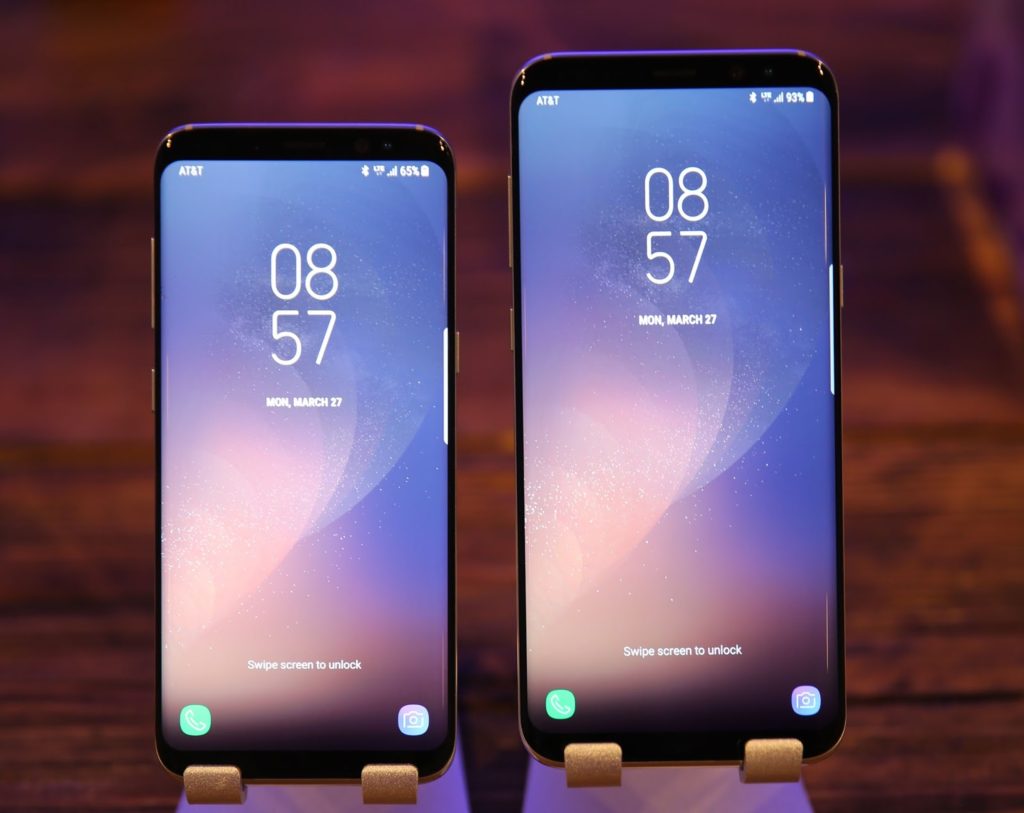RMS Disease, with RMS standing for Rhabdomyosarcoma, is a rare and aggressive type of cancer that originates in the soft tissues of the body, particularly within the muscles. Soft tissues include the muscles, tendons, connective tissues, and other structures that support and protect the body. Rhabdomyosarcoma is specifically derived from immature muscle cells called rhabdomyoblasts, which are normally involved in muscle development and repair.
This type of cancer is most commonly found in children and young adults, although it can occur at any age. It typically presents as a mass or lump that can develop in various parts of the body, including the head, neck, bladder, reproductive organs, arms, legs, and other soft tissue regions. The severity of RMS can vary based on factors such as the location of the tumor, the size of the tumor, and the specific subtype of rhabdomyosarcoma.
There are several subtypes of rhabdomyosarcoma, including embryonal, alveolar, and pleomorphic, each with distinct characteristics and genetic features. Embryonal rhabdomyosarcoma is the most common subtype and often occurs in younger children. Alveolar rhabdomyosarcoma tends to be more aggressive and is associated with specific genetic abnormalities.
Treatment for RMS Disease usually involves a combination of approaches, including surgery, chemotherapy, and radiation therapy. The specific treatment plan depends on the size and location of the tumor, the subtype of rhabdomyosarcoma, and the patient’s overall health. Due to the rarity of this cancer, treatment may be guided by a multidisciplinary team of experts, including oncologists, surgeons, and radiation specialists.
Advancements in medical research and treatment options have improved the prognosis for many individuals diagnosed with rhabdomyosarcoma, especially when the cancer is detected and treated early. However, due to its aggressive nature, RMS Disease requires specialized care and ongoing monitoring even after successful treatment, as there is a risk of recurrence.
Overall, RMS Disease, or Rhabdomyosarcoma, is a challenging and complex form of cancer originating in the soft tissues, particularly the muscles. Ongoing research and medical advances are critical for enhancing our understanding of the disease and improving treatment outcomes for those affected by it.
Table of Contents
RMS Disease :its prevalence and that it primarily affects children and young adults:
RMS Disease, or Rhabdomyosarcoma, is a relatively rare form of cancer, accounting for only a small fraction of all cancer diagnoses. It is estimated that rhabdomyosarcoma comprises less than 5% of all childhood cancers and even smaller percentages of adult cancers.
While the focus on rhabdomyosarcoma highlights the importance of specialized care in pediatric oncology, it also brings attention to the broader aspect of managing health conditions in children and young adults. In recent times, there has been an increasing awareness of the need to address not only cancer but also other prevalent health issues in this demographic, such as Type 2 diabetes. This has led to the inclusion of newer treatments like Rybelsus (about coupons for rybelsus), a medication for Type 2 diabetes, in healthcare discussions. The significance of Rybelsus lies in its potential to manage diabetes effectively in younger patients, aligning with the growing need for age-appropriate and innovative treatment options in pediatric and young adult healthcare.
This type of cancer primarily affects children and young adults. It is one of the most common soft tissue sarcomas found in pediatric patients. In fact, rhabdomyosarcoma is considered the most common soft tissue sarcoma in children, with the majority of cases being diagnosed before the age of 10. It can also occur in teenagers and young adults, though it becomes increasingly rare in older individuals.
The reasons for this age distribution are not completely understood, but it may be related to the cellular changes that occur during growth and development. Certain genetic factors and environmental influences might also contribute to the occurrence of rhabdomyosarcoma in these age groups.
Due to its rarity and its specific predilection for children and young adults, rhabdomyosarcoma requires specialized medical attention and tailored treatment approaches. Multidisciplinary teams of medical professionals with expertise in pediatric oncology and soft tissue sarcomas are often involved in diagnosing and managing this disease. Early detection and appropriate treatment can significantly improve the prognosis for individuals affected by rhabdomyosarcoma.
Causes and Risk Factors:
Here are the known causes and risk factors associated with RMS Disease:
- Genetic Mutations: Changes or mutations in certain genes have been linked to an increased risk of rhabdomyosarcoma. These mutations can disrupt the normal control of cell growth and division, potentially leading to the uncontrolled growth of muscle cells and the formation of tumors. However, these mutations are not always present in every case of rhabdomyosarcoma.
- Hereditary Syndromes: Certain inherited genetic conditions, such as Li-Fraumeni syndrome and neurofibromatosis type 1 (NF1), are associated with a higher risk of developing rhabdomyosarcoma. Individuals with these syndromes have genetic mutations that increase their susceptibility to various cancers, including rhabdomyosarcoma.
- Age: RMS Disease primarily affects children and young adults. The rapid growth and development of muscle tissues during childhood and adolescence might contribute to the susceptibility of these age groups to rhabdomyosarcoma.
- Gender: Some studies suggest that rhabdomyosarcoma may be slightly more common in males than in females, although the reasons for this difference are not fully understood.
- Environmental Factors: Exposure to certain environmental factors, such as radiation or chemicals, has been investigated as potential contributors to rhabdomyosarcoma. However, specific causative agents have not been definitively identified.
- Prenatal Factors: Some researchers have explored prenatal influences on rhabdomyosarcoma development, including maternal exposures during pregnancy. However, more research is needed to establish a clear connection.
- Family History: While rhabdomyosarcoma is generally not considered a hereditary cancer, having a family history of the disease or certain other cancers might slightly elevate the risk.
- Race and Ethnicity: Some studies suggest variations in rhabdomyosarcoma incidence based on race and ethnicity, although the reasons for these differences are not well understood.
Types of RMS Disease:
The three main subtypes of rhabdomyosarcoma are:
- Embryonal Rhabdomyosarcoma: This is the most common subtype of rhabdomyosarcoma and is typically found in younger children. It often arises in the head and neck region, as well as in the genital and urinary areas. Embryonal rhabdomyosarcoma cells resemble developing muscle cells and tend to respond well to treatment. This subtype is associated with genetic mutations involving the PAX3 or PAX7 genes.
- Alveolar Rhabdomyosarcoma: Alveolar rhabdomyosarcoma is more aggressive than the embryonal subtype. It primarily affects adolescents and young adults. This subtype is characterized by specific chromosomal translocations involving the genes PAX3 or PAX7 and FOXO1. Alveolar rhabdomyosarcoma often presents as larger masses and can spread more quickly than the embryonal type.
- Pleomorphic Rhabdomyosarcoma: This subtype is relatively rare and mostly occurs in older adults. Unlike the other subtypes, pleomorphic rhabdomyosarcoma does not resemble developing muscle cells and is composed of more mature, pleomorphic cells. It often arises in the limbs, trunk, or retroperitoneum (the area behind the abdominal cavity).
Symptoms and Diagnosis:
Symptoms:
- Swelling or Lump: One of the primary signs of rhabdomyosarcoma is the development of a lump or swelling in the soft tissues. The lump may be painless or tender, depending on its location.
- Pain: Pain at the site of the tumor is another common symptom. The pain might increase with movement or pressure on the affected area.
- Problems with Normal Function: Depending on the tumor’s location, there might be disruptions in normal bodily functions. For instance, tumors in the head and neck region might cause difficulty in swallowing, breathing, or speaking. Tumors in the urinary or genital area could lead to changes in urination or bowel movements.
- Visible Changes: Tumors near the surface of the skin might cause visible changes in color or texture. For example, a tumor near the eye might cause changes in vision or protrusion of the eye.
- Unexplained Weight Loss: In some cases, unexplained weight loss might occur due to the body’s response to the cancer.
Diagnosis:
Diagnosing RMS Disease typically involves a combination of medical history evaluation, physical examination, imaging tests, and biopsies:
- Medical History and Physical Examination: The doctor will ask about the patient’s symptoms, medical history, and any family history of cancer. They will then perform a physical examination to assess the location, size, and characteristics of the tumor.
- Imaging Tests: Imaging techniques like ultrasound, MRI (magnetic resonance imaging), and CT (computed tomography) scans can help visualize the tumor, determine its size, and identify its location. These tests also aid in assessing whether the tumor has spread to nearby lymph nodes or other areas of the body.
- Biopsy: A biopsy involves removing a small sample of tissue from the tumor for examination under a microscope. This is the definitive way to diagnose rhabdomyosarcoma and determine its subtype. The biopsy helps differentiate between cancerous and non-cancerous tissues and provides important information for treatment planning.
- Genetic Testing: In some cases, genetic testing may be conducted to identify specific genetic mutations or chromosomal abnormalities associated with rhabdomyosarcoma subtypes.
Treatment Options:
The main treatment options include:
- Surgery: Surgical removal of the tumor is often the first step in treatment if the tumor can be safely excised without causing significant damage to surrounding structures. The extent of surgery varies depending on the tumor’s size, location, and potential impact on organ function. In some cases, the entire tumor can be removed, while in others, only a portion might be resected.
- Chemotherapy: Chemotherapy involves the use of powerful drugs to kill or slow the growth of cancer cells throughout the body. It’s often used as part of the treatment plan for rhabdomyosarcoma, particularly to target any cancer cells that may have spread beyond the primary tumor site. The specific drugs and duration of chemotherapy depend on the individual’s condition and response to treatment.
- Radiation Therapy: Radiation therapy uses high-energy beams to target and destroy cancer cells. It is commonly employed after surgery or alongside chemotherapy to shrink tumors before surgical removal or to eradicate remaining cancer cells. Radiation therapy is carefully planned to minimize damage to healthy tissues.
- Targeted Therapies: Targeted therapies are designed to specifically target certain molecules or pathways that play a role in cancer growth. Research is ongoing to identify potential targets for rhabdomyosarcoma treatment, although targeted therapies are not yet a standard approach for this cancer.
- Stem Cell Transplant: In some cases, especially when intensive chemotherapy is used, a stem cell transplant (also known as a bone marrow transplant) might be considered to replace damaged bone marrow cells with healthy ones. This is more common in cases of aggressive treatment or high-risk disease.
- Clinical Trials: Clinical trials offer experimental treatments that are not yet widely available. Participating in a clinical trial can provide access to cutting-edge therapies and contribute to the advancement of treatment options for rhabdomyosarcoma.
The treatment plan is developed collaboratively by a team of specialists, including pediatric oncologists, surgeons, radiation oncologists, pathologists, and other healthcare professionals. The goal is to balance effective treatment with minimizing side effects and preserving the patient’s quality of life, especially when treating children and adolescents.
In conclusion, RMS Disease (Rhabdomyosarcoma) is a rare and aggressive form of cancer originating in the soft tissues, primarily muscles. Its complex nature stems from a combination of genetic mutations, environmental influences, and potentially hereditary factors. While the exact causes remain elusive, advancements in medical research have led to improved diagnosis, treatment options, and survival rates. Prompt diagnosis, a multidisciplinary approach to treatment, and ongoing follow-up care are crucial for enhancing the outcomes and quality of life for individuals affected by this challenging disease. Continued research and medical innovation are essential to further unravel the mysteries of RMS Disease and develop more effective strategies for prevention, early detection, and treatment.
FAQ
Q1: What are the treatment options for RMS?
Ans: Treatment options for RMS may include surgery, chemotherapy, radiation therapy, and targeted therapies.
Q2: Can RMS disease be cured?
Ans: Yes, with appropriate treatment and early detection, RMS can be cured in many cases.
Q3: Is RMS more common in children or adults?
Ans: RMS is more commonly diagnosed in children and adolescents, although it can occur in adults as well.
Q4: What are the long-term effects of RMS treatment?
Ans: The long-term effects of RMS treatment may vary and can include physical, emotional, and developmental challenges.
Q5: Does RMS always require surgery?
Ans: Surgery is one of the treatment options for RMS, but the necessity depends on various factors such as tumour location and size.











![How to Unlock Bootloader without PC On Android [2022]](https://cracktech.net/wp-content/uploads/2019/02/unlock-boot.png)